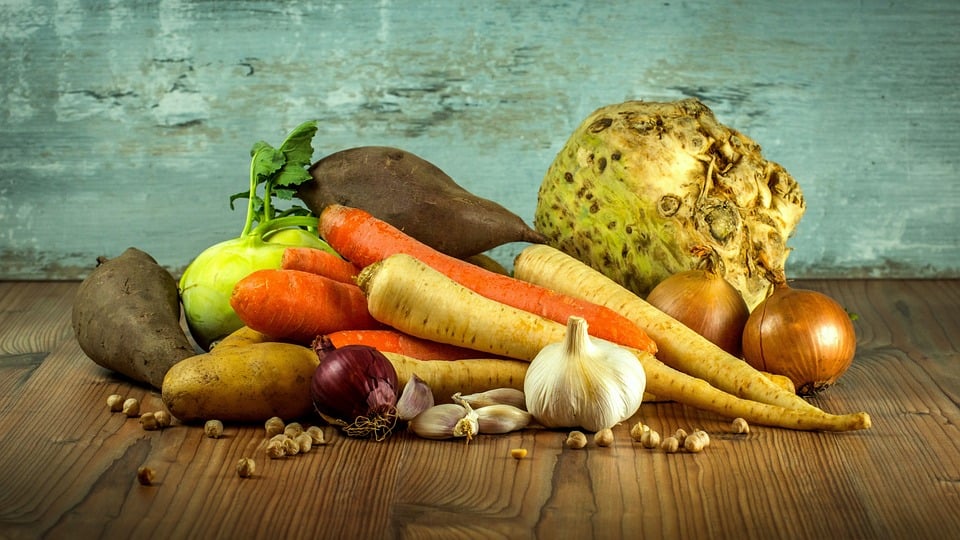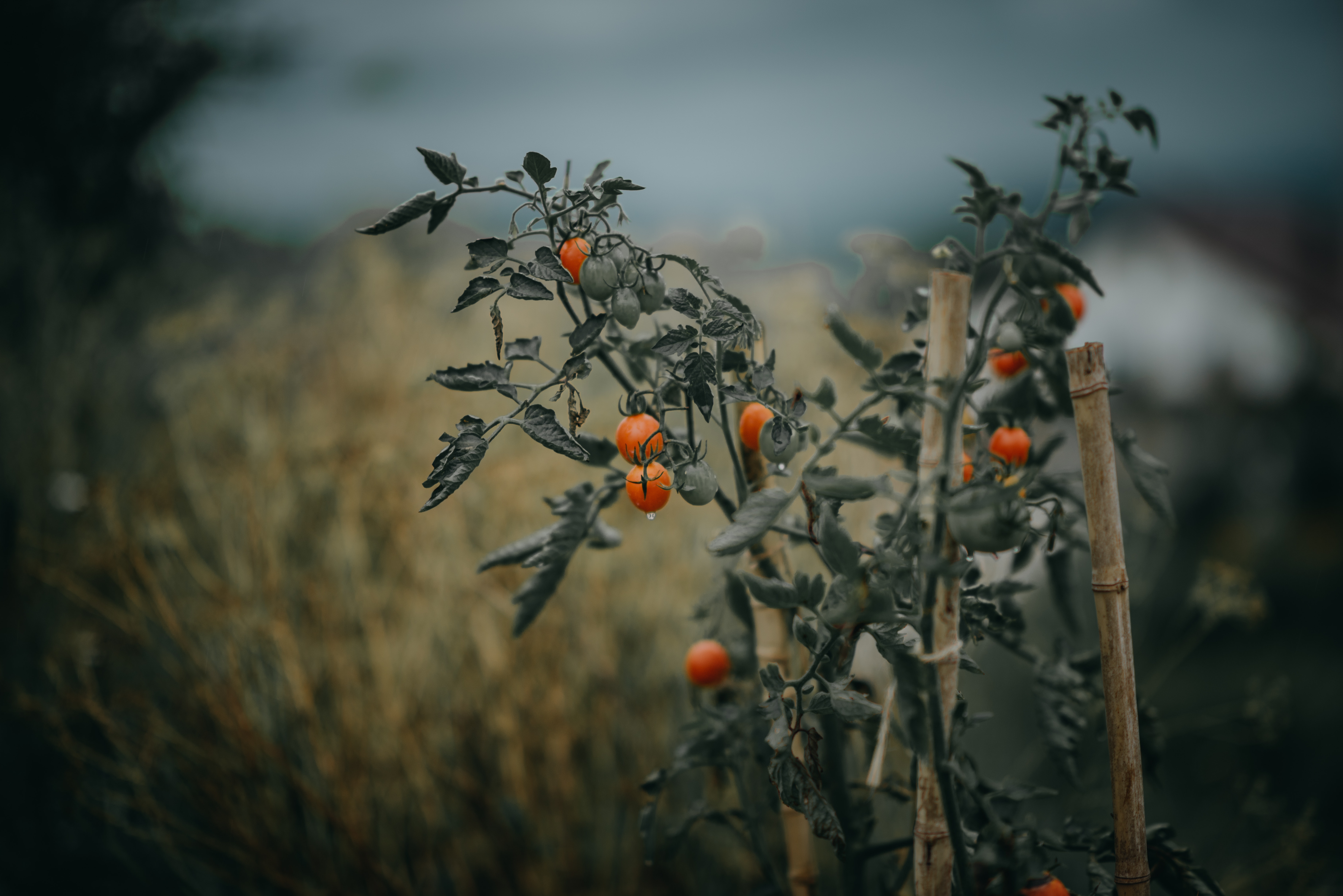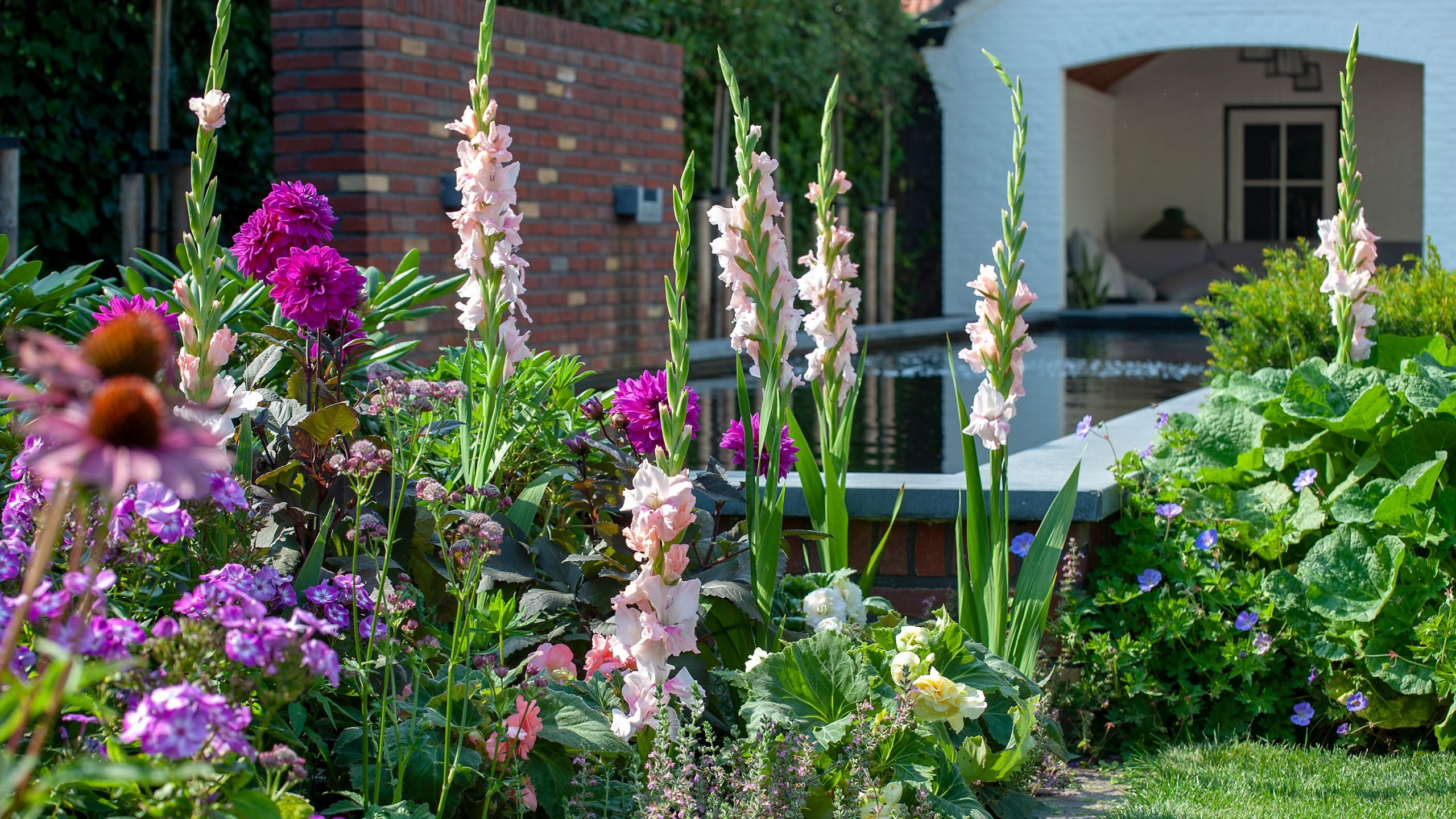Top 20 Winter Plants for Window Boxes that Brighten up Your Home
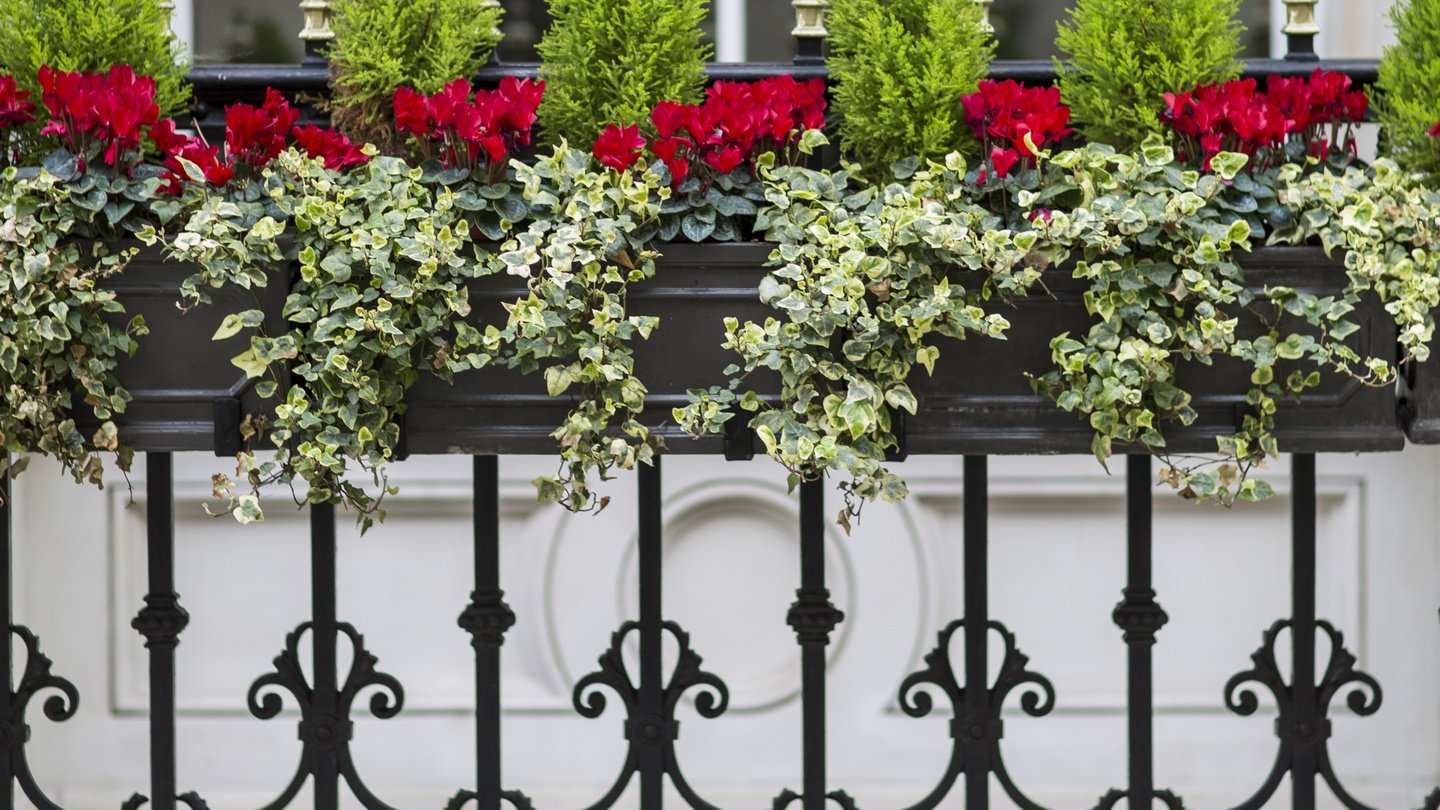
Table of Contents
Winter can seem to seep out every bit of colour from our homes. But with a window box, you can decorate your home for Christmas uniquely. And even though they can be used all around the year, choosing the perfect winter plants for window boxesbecome necessary.
But the choice of plant is not just seasonal. Some plants grow better in the shade, and some would suit windows that get the most sunlight. You can even opt for multiple plants in the same box for a varied look. In this article, we talk about the best winter plants that would brighten up your cold months.
Some of The Best Winter Plants for Window Boxes
1. Ivy
The English Ivy, or Hedera helix, is one of the most popular winter plants for window boxes. They are evergreen perennials that take no time to completely take over your planter. The glossy-leafed, dark green ivy also spills from your window sill to create a beautiful backdrop. Ivy can also give a home a sense of abundance and peace with its lushness.
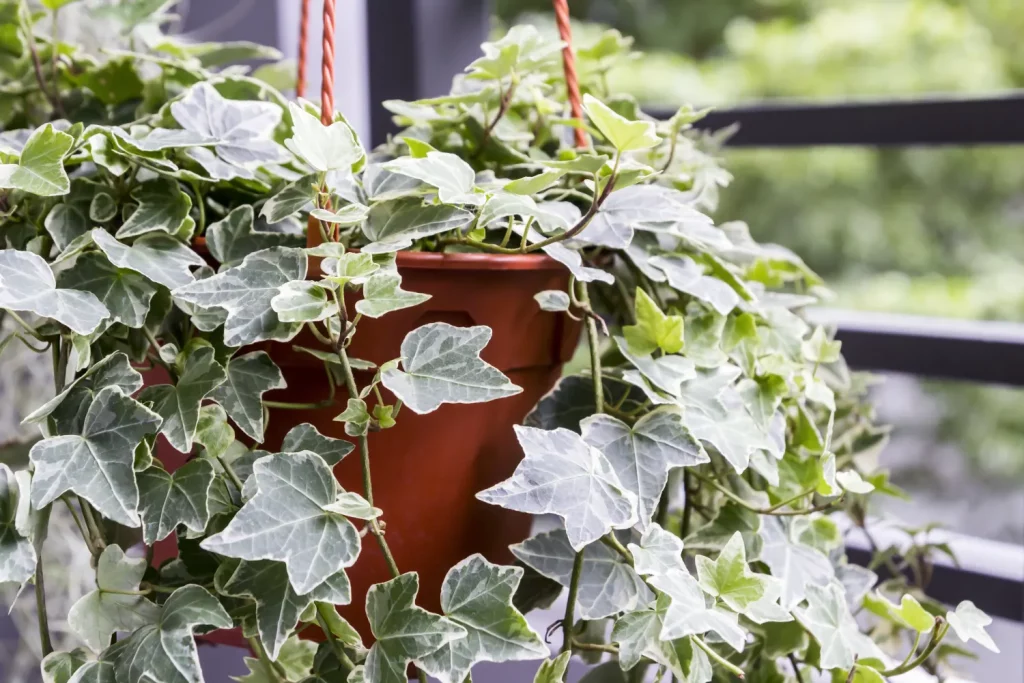
This evergreen vine grows well, but it needs a little care to flourish. So before planting, make sure your soil is well drained. As ivy is an invasive species, you might need to prune it often. By pinching its growing tips, your ivy will attain a beautiful bushy shape.
2. Heather
Varieties of heathers like Erica Carnea and Erica Darleyensis are some of the prettiest flowers you can have on your windows. They are completely unbothered by the cold and can shine even with snow, ice, and cutting winds. Heathers are also low maintenance; weak sunlight and a little lime in the soil are enough for them.
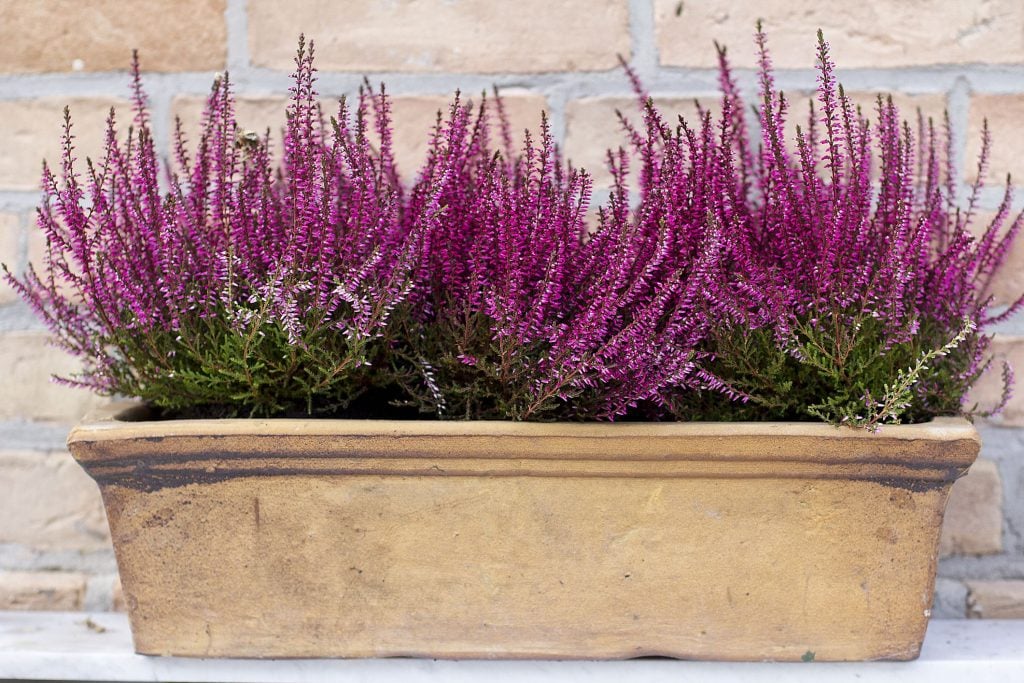
The dark green stems of the heathers provide the perfect contrast against the delicate flowers. Erica carnea are white flowers that especially grow in the wilds of the Alps and survive very well in hilly regions. Erica x Darleyensis or ‘Darley Dale’ has pink and cream flowers that start blooming from December to April.
Points To Remember: Plants grow very little during the cold months, so do now sow your seeds during winter. Choose a plant that’s already grown a bit and shift it to your window box.
3. Daphne
Choosing Daphnes among your winter plants for window boxes can never go wrong. They are perfect for a pop of colour during a drab day. The delicate sweet-smelling flowers are often found in clusters of pinks, whites, or yellows. These hardy shrubs usually prefer shade with a little warmth, making them ideal for winter months.
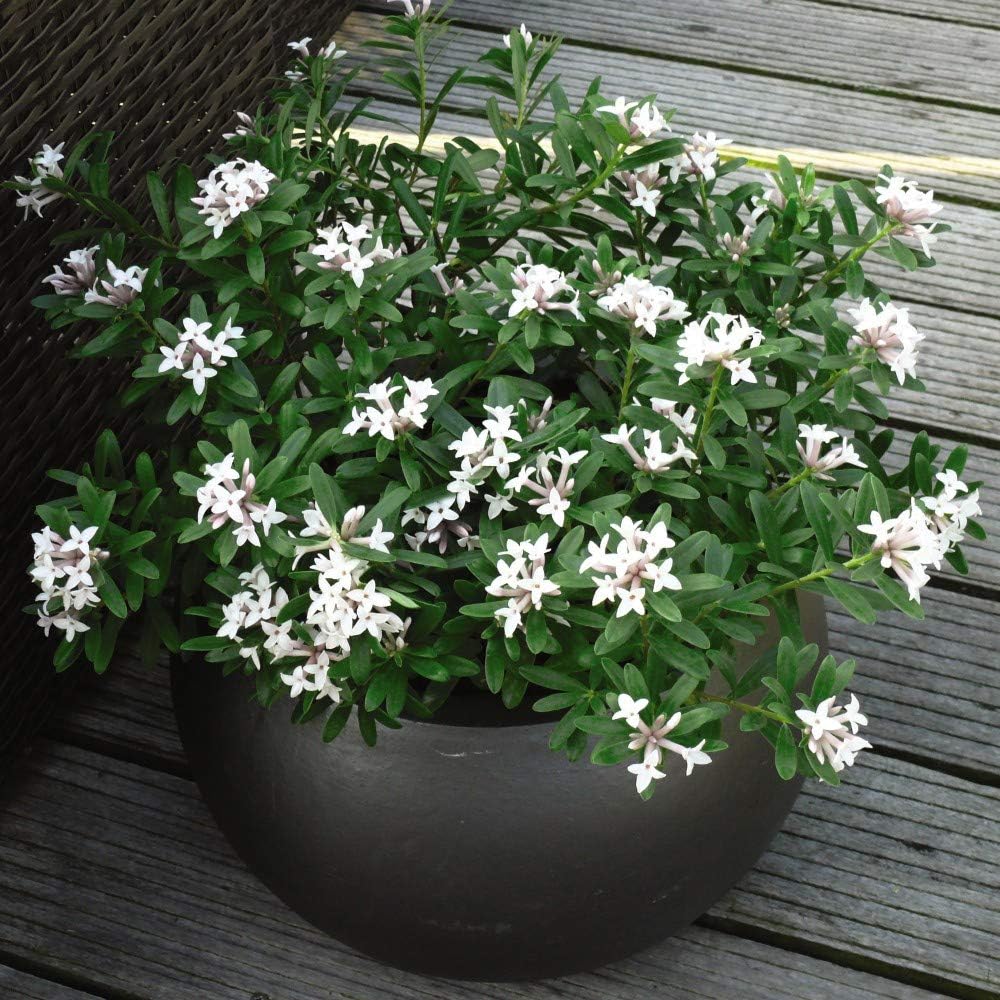
Daphnes are mostly evergreen, meaning that they will retain their flowers throughout the year. The shrub is also compact, with slow growth. Daphnes need very little maintenance and only need water during dry spells. However, dwarf daphnes tend to dry easily, so make sure you keep an eye on the soil.
4. Snowdrop
Snowdrops or Galanthus is a kind of perennial flowering plant that look perfect during the winter months. They, along with black lilyturf and hellebores, can create a modern appearance instead of the traditional winter plants for window boxes. The small, white bell-shaped flowers are known for blooming early as January.
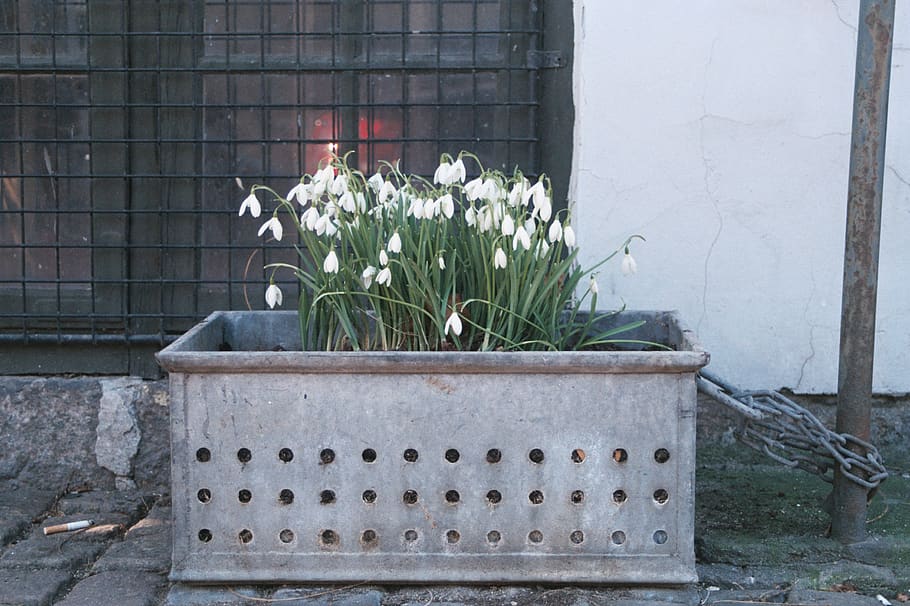
Snowdrops are usually chosen for their hardiness as they can bloom even through the frozen ground. They are also quite easy to maintain as they need no care once the bulbs have been established. However, it is advised to let the foliage die naturally to let the nutrients get back to the flowers.
5. Pansy
Pansies and violas are the most common types of winter bedding flowering. Their bright and aesthetic flowers make for the brightest contrast against a cold winter. But what most people don’t know is that they are completely edible. Adding a few fully blossomed flowers to your winter salad can make it tasty as well as beautiful.
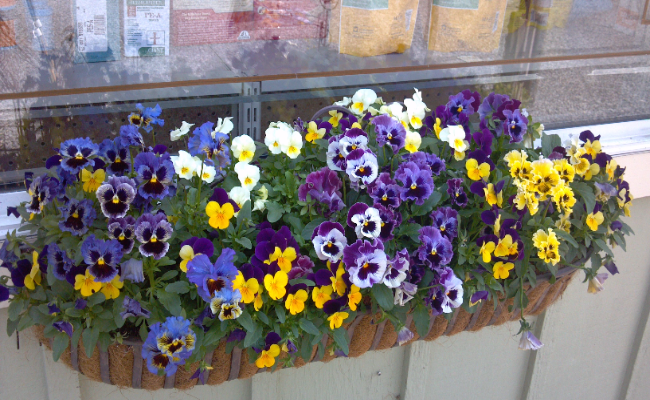
The best time to plant these short-term perennial plants is during September and early October. This gives the roots ample time to take hold before the cold hits. Some of the most popular varieties are the ‘Matrix Mixed’ pansies which offer super-sized flowers in a bunch of bright colours.
6. Violet
Compared to pansies, violets produce many more flowers. The variety of African violets is special as they keep flowering even during the winter months. Your collection of winter plants for window boxes should include a bunch of violets for that splash of colour. Violets are also small and agile and, therefore, a great alternative to pansies.
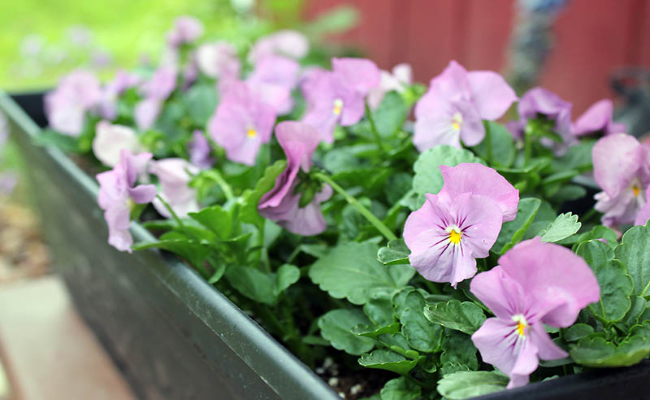
Contrary to popular belief, violets are quite easy to grow once you understand their needs. The planter should have holes to keep the soil drained, as it should be placed under indirect sunlight. Violets need a lot of light, so a north- or east-facing window is the best choice for these plants.
7. Christmas Rose
Helleborus Niger, or Christmas rose, is an evergreen perennial that becomes a fan favourite during the winter months. The flowers are glistening white, large, and bowl-shaped, and their mention is often found in songs and stories. Their foliage is deep green, leathery, and low-growing. The plant also grows in stumpy bushes, making it one of the most common winter plants for window boxes.
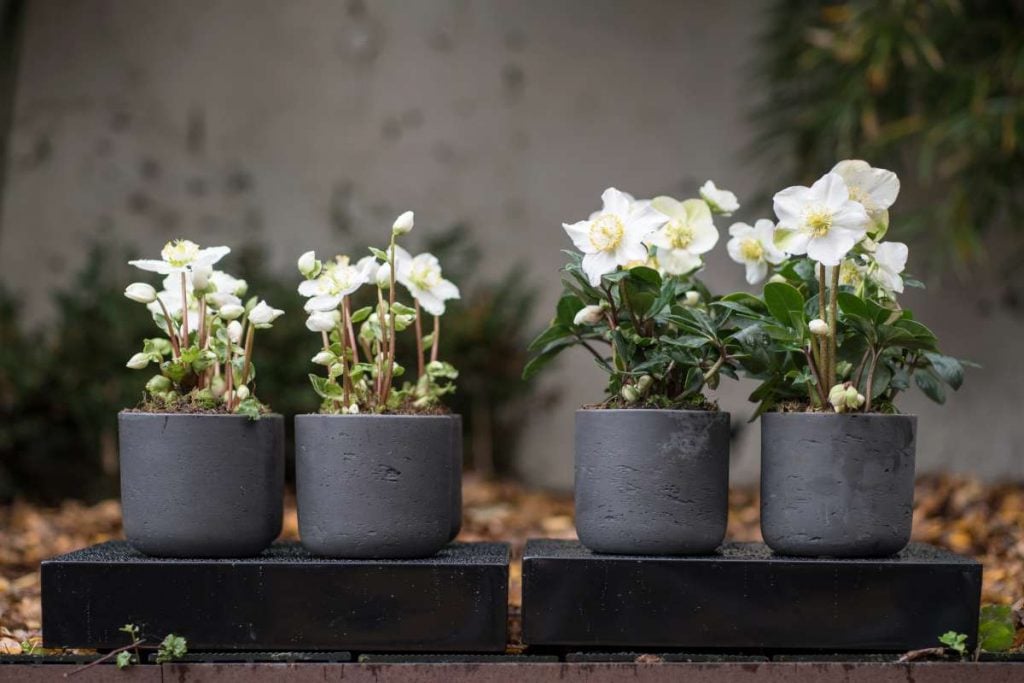
Christmas roses are native to the mountains of Europe, so they can thrive in winter. But they do need protection against cold winds, so a sheltered side would be the best to plant them. To make your sill look lush and full, plant the seeds in groups.
Point to Remember: To ensure proper growth and lush foliage, install the window boxes in the position where it gets the most sunlight during winter.
8. Juniper
Junipers are a trendy and evergreen choice to brighten up your home for the winter months. The light green aesthetics often make for a contrast against the dark, drab backdrop. But junipers often grow up to be 10m tall. So, get dwarf varieties like Juniperus communis or Compressa as yourwinter plants for window boxes.
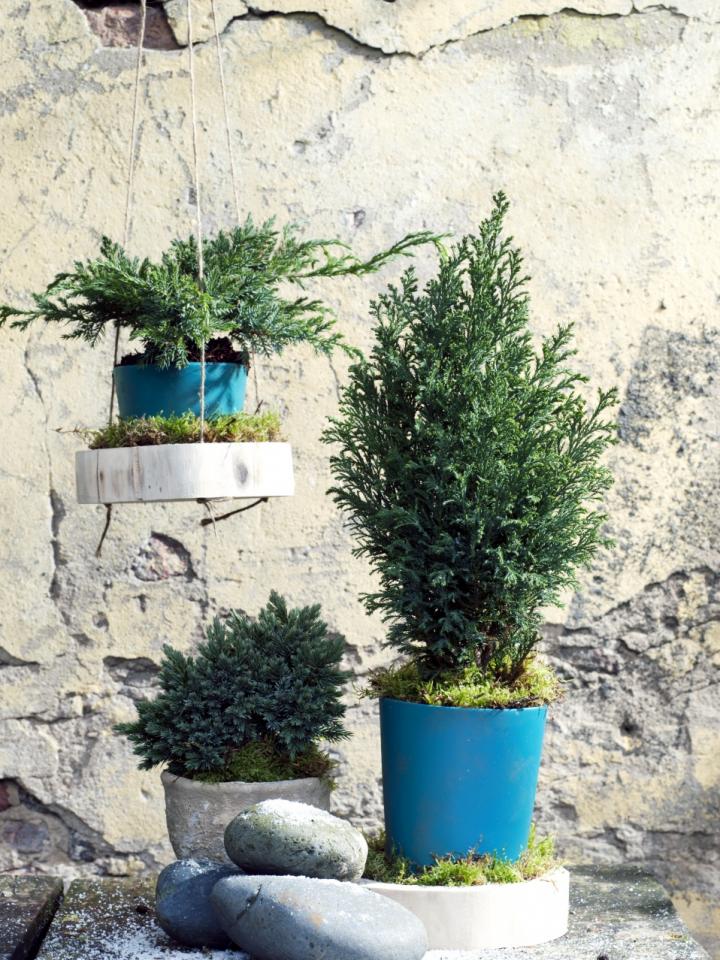
The dwarf junipers have a habit of growing in a narrow upright position, and the foliage is also prickly and well-packed. The blue-green colour of the conifer lasts throughout the entire year. Junipers also thrive in shaded areas, so even weak sunlight doesn’t harm their growth.
9. Rosemary
If flowers are not your cup of tea, you can also plant certain herbs for the dark winter months. The greenery adds a little colour to the outside world. And with time, you can harvest the crop and get some delicious herbs to accompany your food. Rosemary is a great choice for winter plants for window boxes during the cold months.
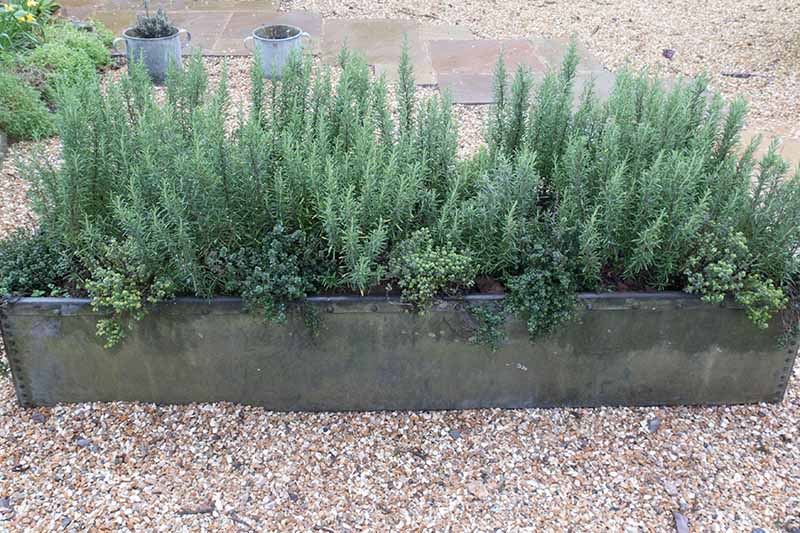
Rosemary can survive winter well and, under certain climate conditions, can even remain green throughout winter. But when there are chances of frost, it is best to move the planter to a warmer position. Rosemary also loves humidity; therefore, remember to mist the foliage often to keep the air moist.
10. Thyme
Another herb that has become a staple in most herb gardens around the world is thyme. The heavenly smell, along with the deep, attractive foliage, creates a beautiful backdrop. And after harvesting, the herb can be used in food for amazing flavour. Thyme is also very easy to grow and maintain throughout the year.
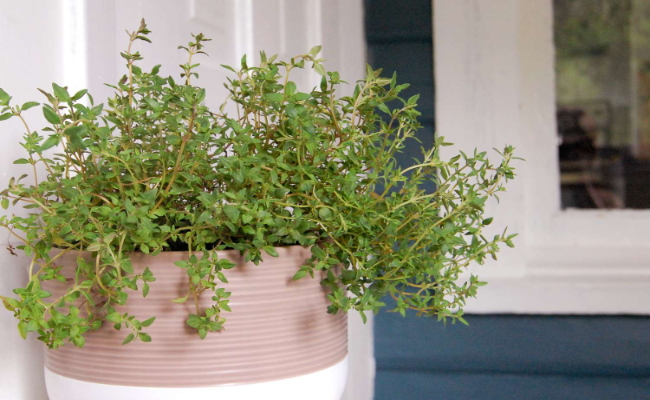
Thyme should always be naturally pruned regularly to keep it healthy. Thyme, along with rosemary, can overwinter well in window boxes. However, it is necessary to find the right spot so that your plant doesn’t become too wet. The evergreen perennial also allows the leaves to be harvested all year.
11. Lavender
Lavender may grow beautifully in a Mediterranean climate, but that doesn’t mean it won’t look good during winter. True lavender or Lavandula angustifolia is hardy and can survive cold weather with a little care. However, pruning the bush regularly is important to make sure it looks lush and doesn’t go bald.
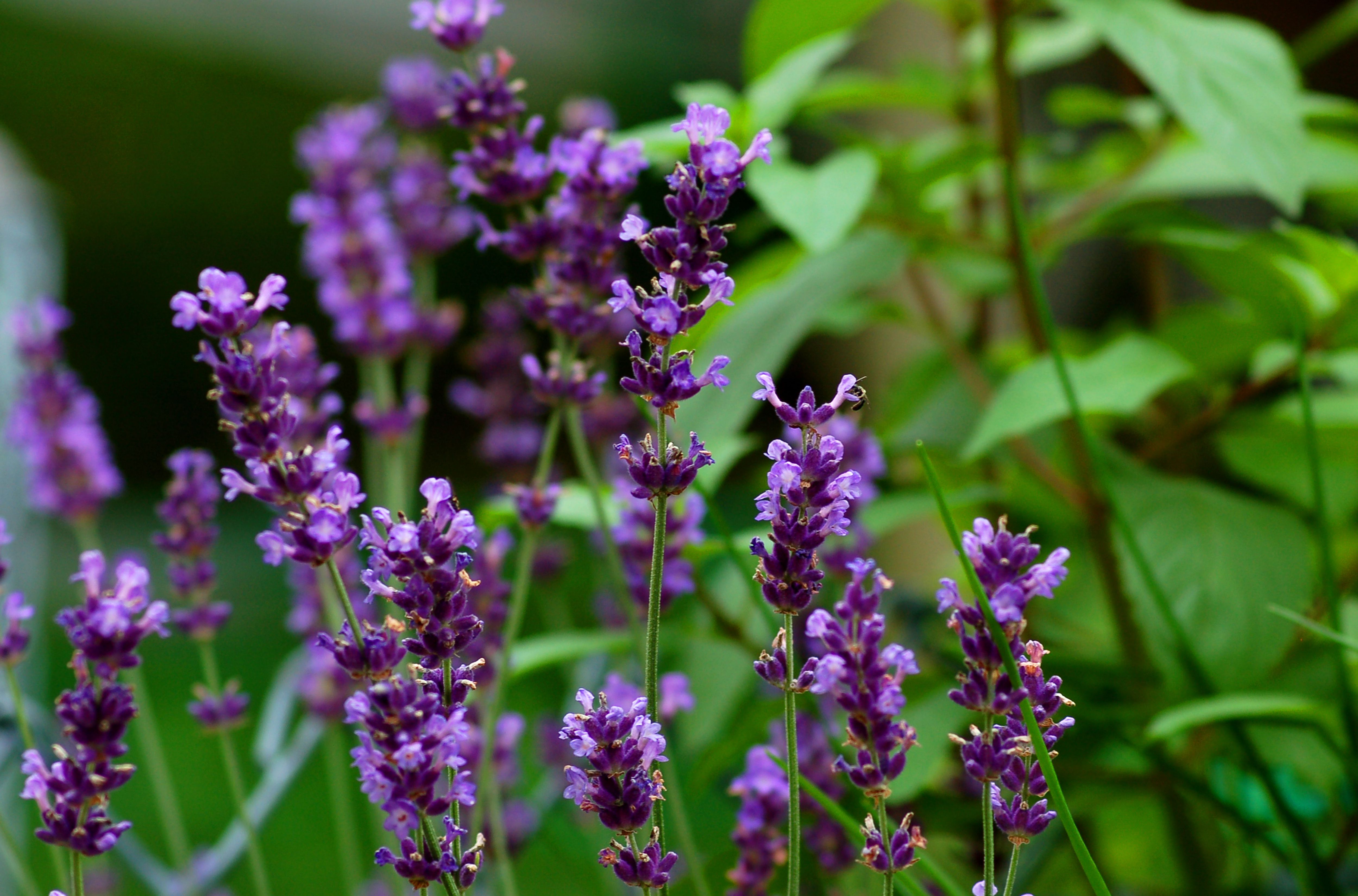
True lavenders are a great choice as winter plants for window boxes due to their bright colours and hardiness. But the other varieties of lavender do not tolerate frost well and may need to be moved come winter. To make sure your lavender survives the winter outdoors, keep it protected against the wind.
12. Rubella
A ruggedly beautifulwinter plant for window boxes is the Skimmia japonica or Rubella. The plant is known for its hardiness against the cold winds and harsh weather of winter. Its dark red flower buds bloom throughout autumn and winter till spring.
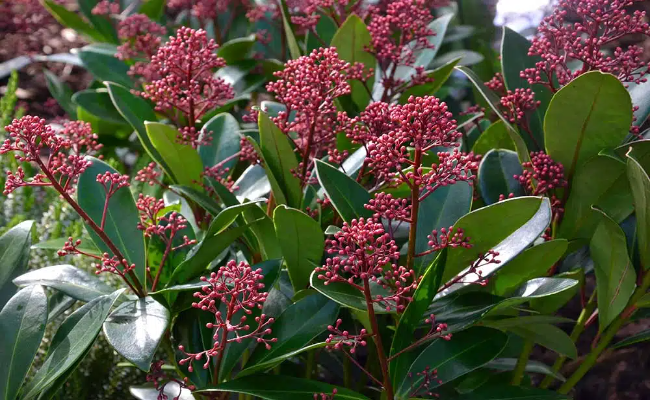
The red, along with its green foliage, also gives a Christmassy feel to the plant, making it a popular choice for holiday decor. The evergreen rubella plant flourishes well, whether be it in the sunlight or the shade. They are also low maintenance and grow all year round, making them popular among gardeners.
13. Peas
Sowing practical crops can be a great way to add a little greenery to your winter days. Overwintering these edibles makes sure you get to harvest fresh greens during the cold and have a cute window box. The plants need to be established before the harsh cold; therefore, remember to plant them before November.
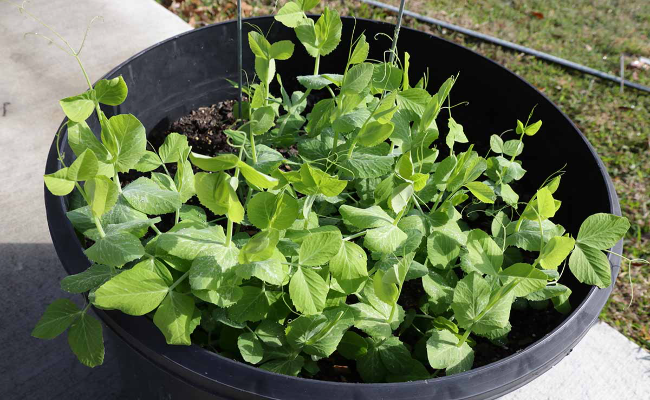
But not every variety of peas will survive the cold. So before sowing any old peas, dig through to find some hardy ones. The round peas are perfect as winter plants for window boxes as they do not have crevices that store moisture. The best crop would be the dwarf variety, Douce Provence.
Pro Tip: Check your compost regularly to ensure it doesn’t dry out. Small plants especially often suffer from over or under-watering.
14. Perennial Onion
Another edible crop that’s perfect for winter is the allium or Perennial Onion. Sowing a bunch of them would mean you get free veggies for the next year. These alliums are also great for mass plantings and work well with other perennials. And come spring, a cluster of tiny flowers starts blooming to give your window box a delicate look.
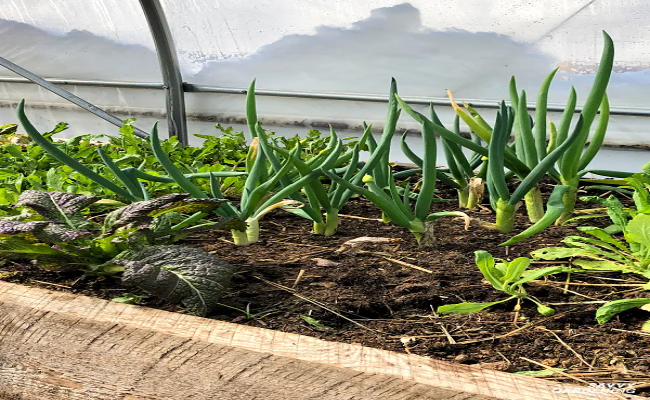
Apart from being extremely practical, these perennial onions are also easy to grow. They do not require any specific kind of soil and are happy with most all-around loam mixes. They are also very hardy and require little to no care.
15. Kale
Some of the prettiest window boxes across the UK sport not just flowers but edibles like kale and cabbage. These varieties all belong to the Brassica family and can survive a harsh winter quite well. Planting these also means that you will have a source of fresh food throughout the cold months.
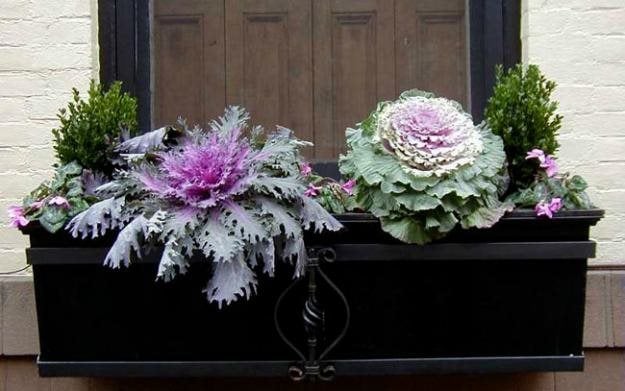
The rich dark green colour of the leaves makes attractivewinter plants for window boxes. And the leaves can be used for several salads and garnishes. Kale also has a hardiness rating of H4, meaning it will not easily succumb to frost.
16. Japanese Holly
Japanese holly or Ilex crenata is a dead ringer among gardeners for the choice of plants on window boxes. The plant is also used for hedging or borders, given its slow-growing nature and beautiful foliage. The evergreen shrubs have tiny, glossy scalloped dark green leaves that brighten up against other perennials.
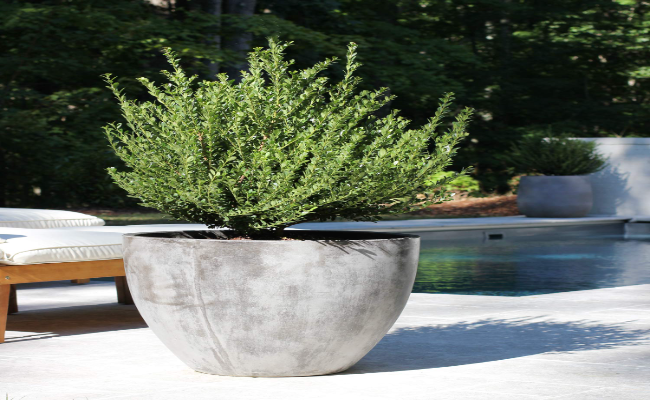
Japanese holly has a hardiness level of H6, making sure they would withstand a harsh winter. Their bushy growth also makes your planter look full and lush. As a bonus, not only is it low maintenance, but it is also not susceptible to diseases and pests.
17. Angel Wings
Angel wings or Senecio candidates are quite unusual and not often seen on window sills. But they are one of the best perennials out there. The eye-catching huge silvery, or grey-white, velvety soft leaves are sure to make your house stand out. The plant’s main attraction is its foliage, which is even more irresistible to touch.
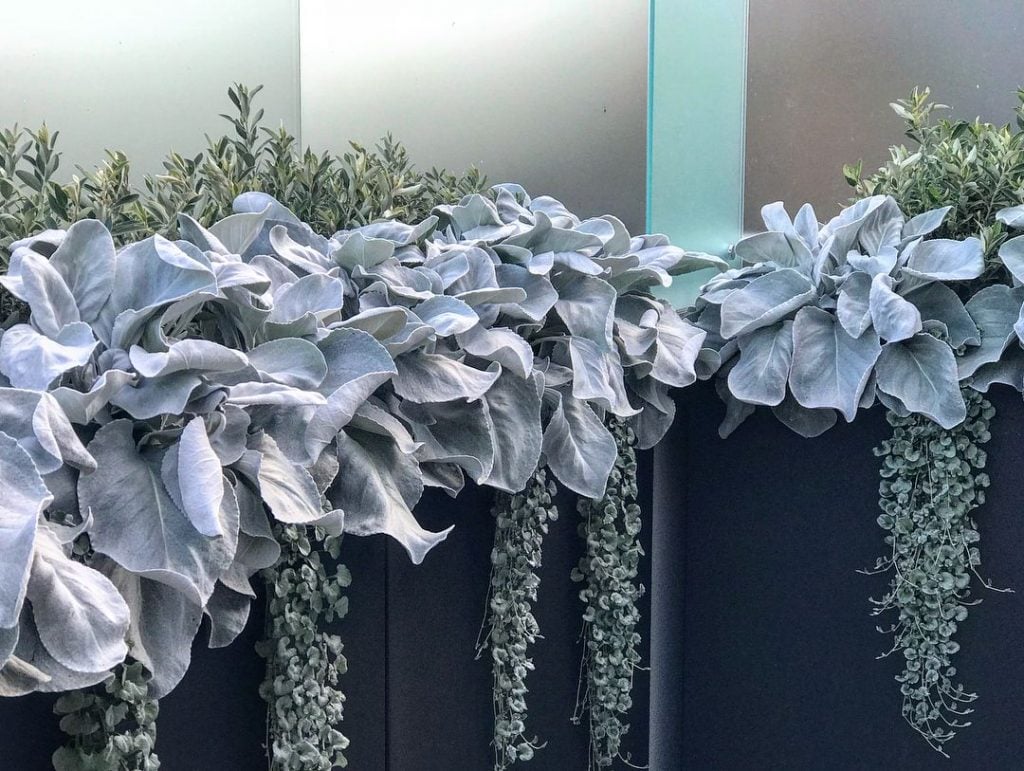
The plant is hardy enough to survive the winter but doesn’t do well under -5°C. The angel wings also prefer well-drained soil. In the beginning, put extra care to make sure the soil is evenly moist without being overwatered. But once it has taken root, they need very little care to flourish.
18. Cyclamen
Cyclamen are bright flowering plants that brighten up the dark autumn and winter days considerably. They are hardy perennials that are kept in cool places for the best results. Cyclamens are perfect for the winter as they grow dormant if exposed to too much warmth. They also fare better when potted, so your window sill becomes the best site for them.
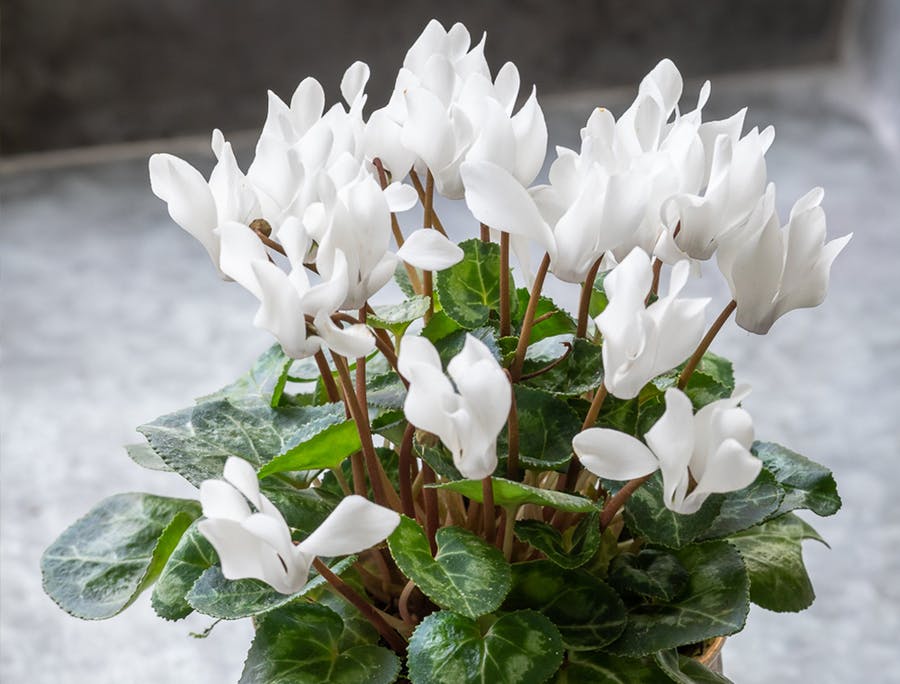
The hardy varieties of cyclamen also do not need watering when they are outside. And even though the foliage can tolerate a lot, covering them during temperatures of -30 degrees helps maintain the bloom. Therefore, you can let them grow outdoors without worries.
19. Carex
Carex is not a grass but does belong to the Cyperaceae family. They are also evergreen perennials, making them a good choice as winter plants for window boxes. And when paired with other ornamental grasses, the overall aesthetic can be quite appealing. Carex also grows well in moist soil, whether be it under shade or directly under the sun.
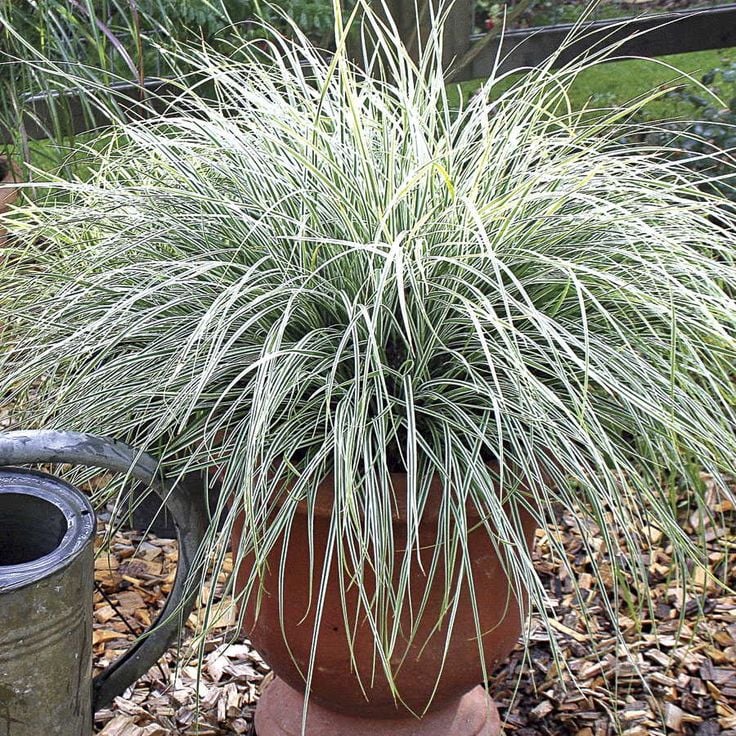
Appearance-wise, carex leaves have tuft-shaped arched leaves that grow in clumps. The colours can vary from pale to dark green and even bright yellowish-green. As they bronze during the winter months, the aching leaves look good throughout the cold.
Points To Remember: If your window box sits on a ledge, raise it slightly with a couple of bricks. This helps with water drainage and prevents the pot from cracking due to frost.
20. Ajuga
A hardy perennial that is dark but looks great against the winter backdrop is Ajuga, commonly known as the bugle. These are usually ground-hugging but can create nice foliage similar to ivy. Their blue-toned flowers create a great contrast against other perennial flowers. These bulges also prefer soil that is a little damn and doesn’t dry out in the light.
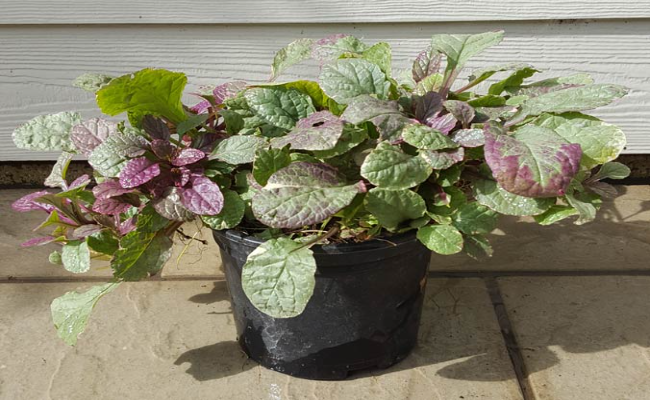
Ajuga plants are quite pretty with their tongue-like leaves that are crinkled and shiny. The flowers bloom during spring and look like short spires of tiny, blue, white, or purple. Ajugas are also quite easy to grow and maintain, provided the conditions are good.
Final Thoughts
Window boxes brighten up your home and make it look warm in winter. But filling them with the perfect greenery that would last till spring is important. However, the plant or plants you sow make a huge difference in terms of use as well as aesthetics.
Your winter plants for window boxes can be simple flowers like pansies or violet. They can also be practical choices like herbs, kale, and cabbages. But you will never go wrong with these choices. And if you are looking for more gardening tips, subscribe to our newsletter and get the best secrets sent to your inbox.
Frequently Asked Questions
What Planters Can Stay Outside in Winter?
Planters made of metal or wood can typically handle frost very well. Fibreglass, concrete, and resin pots too can be used during cold winters, along with some plastic pots. But plastic becomes brittle over time. But, Terra-cotta and ceramic pots at not made for the cold as they freeze and crack.
What Colour Is Best for Outdoor Planters?
To put winter plants for window boxes, light-coloured planters may look aesthetic, but in the end, darker-coloured containers should be used as they absorb more sunlight. Dark planters also retain heat much longer.
How Do You Arrange Outdoor Planters?
For outdoor planters, groups of three or five garden pots are usually seen. To make the place look more aesthetic, use a big pot at the back and multiple small planters in front. It gives the illusion of more greenery and makes the entire display look full and lush.

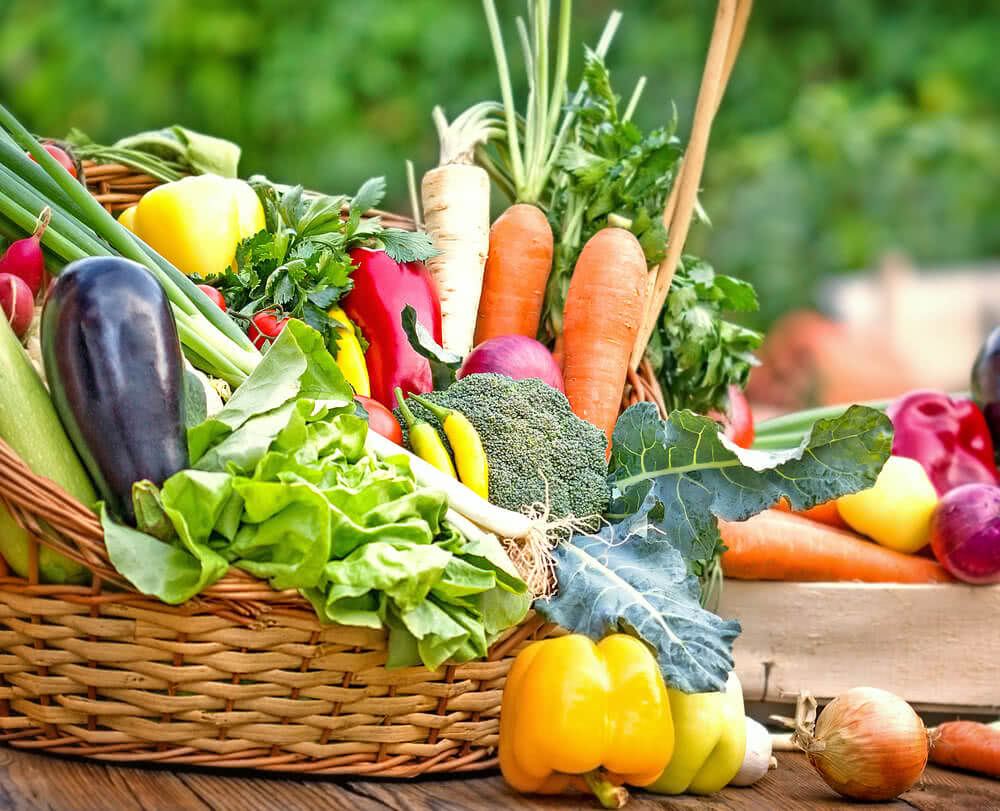
![The Top 10 Vegetables You Should Plant in August [UK]](https://staging.thearches.co.uk/wp-content/uploads/Vegetables-That-Can-Be-Planted-In-August.jpeg)

